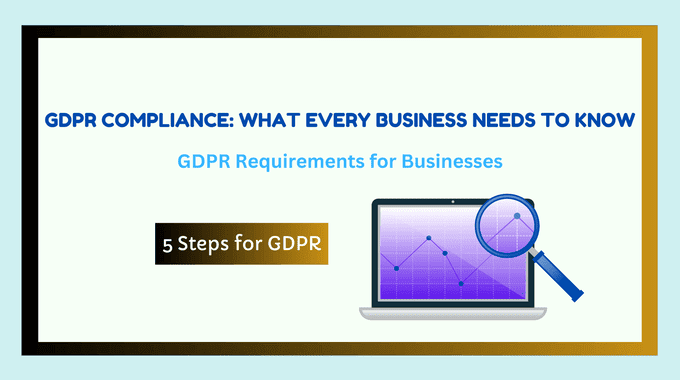
GDPR Compliance for Digital Tools: What Every Business Needs to Know
Created on 7 November, 2024 • Data Privacy & Digital Security for Online Businesses • 8 minutes read
Learn the essentials of GDPR compliance for digital tools. Understand key requirements, from data processing to security, for safeguarding customer privacy.
With the General Data Protection Regulation (GDPR) now a critical part of data protection law, businesses need to understand how to comply—especially when using digital tools. This article provides an in-depth look at GDPR compliance requirements and how businesses can adopt best practices for data security, transparency, and customer trust.
Understanding GDPR and Its Importance
The GDPR is a regulation enacted by the European Union to strengthen and unify data protection for individuals within the EU. GDPR compliance isn’t limited to European businesses; any organization processing data of EU citizens, regardless of location, must adhere to GDPR standards. Non-compliance can result in heavy fines and legal consequences, making it critical for businesses to implement GDPR-compliant practices.
Key GDPR Requirements for Businesses Using Digital Tools
1. Data Collection and Processing Transparency
GDPR emphasizes transparency in data collection and processing. Businesses must clearly inform users about:
- What data is being collected
- How the data will be used
- How long the data will be retained
- Who will have access to it, including third-party processors
Transparency fosters trust and ensures that customers understand how their data is being handled.
2. Implementing Robust Data Security Measures
Data protection isn’t just a regulatory requirement—it’s a business necessity. GDPR requires businesses to adopt reasonable data protection measures to safeguard customer data from unauthorized access, leaks, or breaches.
Security Best Practices:
- Encryption: Encrypting customer data helps secure it during storage and transmission.
- Access Controls: Limit access to sensitive information through multi-factor authentication and role-based access.
- Regular Security Audits: Conduct audits to identify and address potential vulnerabilities.
3. Ensuring User Consent
GDPR mandates that businesses obtain clear and explicit consent before collecting personal data. Consent requests must be easily understandable, specific, and provide users with the ability to opt out. This ensures that users willingly agree to the processing of their data.
How to Collect GDPR-Compliant Consent:
- Use clear language and avoid complex terms.
- Provide options for customers to modify or withdraw their consent easily.
4. Data Access and Portability Rights
Under GDPR, users have the right to access and transfer their data from one service provider to another. Businesses must provide individuals with a copy of their personal data in a commonly used, machine-readable format upon request. This right reinforces customer control over their information.
5. Using GDPR-Compliant Digital Tools
When selecting digital tools, businesses must ensure that these tools adhere to GDPR standards. Digital tools and platforms must support data protection and transparency, offering built-in security measures and consent management options.
Digital ToolKit Hub provides a suite of GDPR-friendly features, including secure URL shorteners , biolink pages , and custom QR codes with password protection options. Using such compliant tools can simplify adherence to GDPR requirements.
Steps for GDPR Compliance with Digital Tools
Step 1: Perform a Data Audit
Conduct a thorough data audit to understand what personal data you collect, where it is stored, and how it is processed. This audit helps in identifying gaps in GDPR compliance and understanding the data flow within your digital tools.
Step 2: Update Your Privacy Policies
Your privacy policies should reflect GDPR compliance. Clearly detail how customer data is handled and update any sections related to data collection, processing, and retention. Ensure that this information is accessible to users at all times.
Step 3: Enable User Control Over Their Data
Empower users to control their data by providing easy access to:
- Consent management tools
- Data export options
- Data deletion or "right to be forgotten" requests
With Digital ToolKit Hub’s customizable biolink pages, businesses can create user-friendly, GDPR-compliant forms for data requests and updates.
Step 4: Train Employees on GDPR Compliance
Employee awareness is key to maintaining compliance. Conduct regular training sessions on GDPR best practices, ensuring employees understand their role in protecting customer data and maintaining GDPR standards.
Step 5: Choose Reliable, GDPR-Compliant Vendors
Select digital tool providers with a proven record of GDPR compliance. Always verify if your digital tools are equipped with features that protect data and provide GDPR-friendly functionalities.
Navigating GDPR compliance for digital tools is essential for protecting customer privacy, building trust, and avoiding legal repercussions. By understanding GDPR’s requirements—such as data transparency, security, consent, and data rights—businesses can make informed decisions about the tools they use and how they manage data.